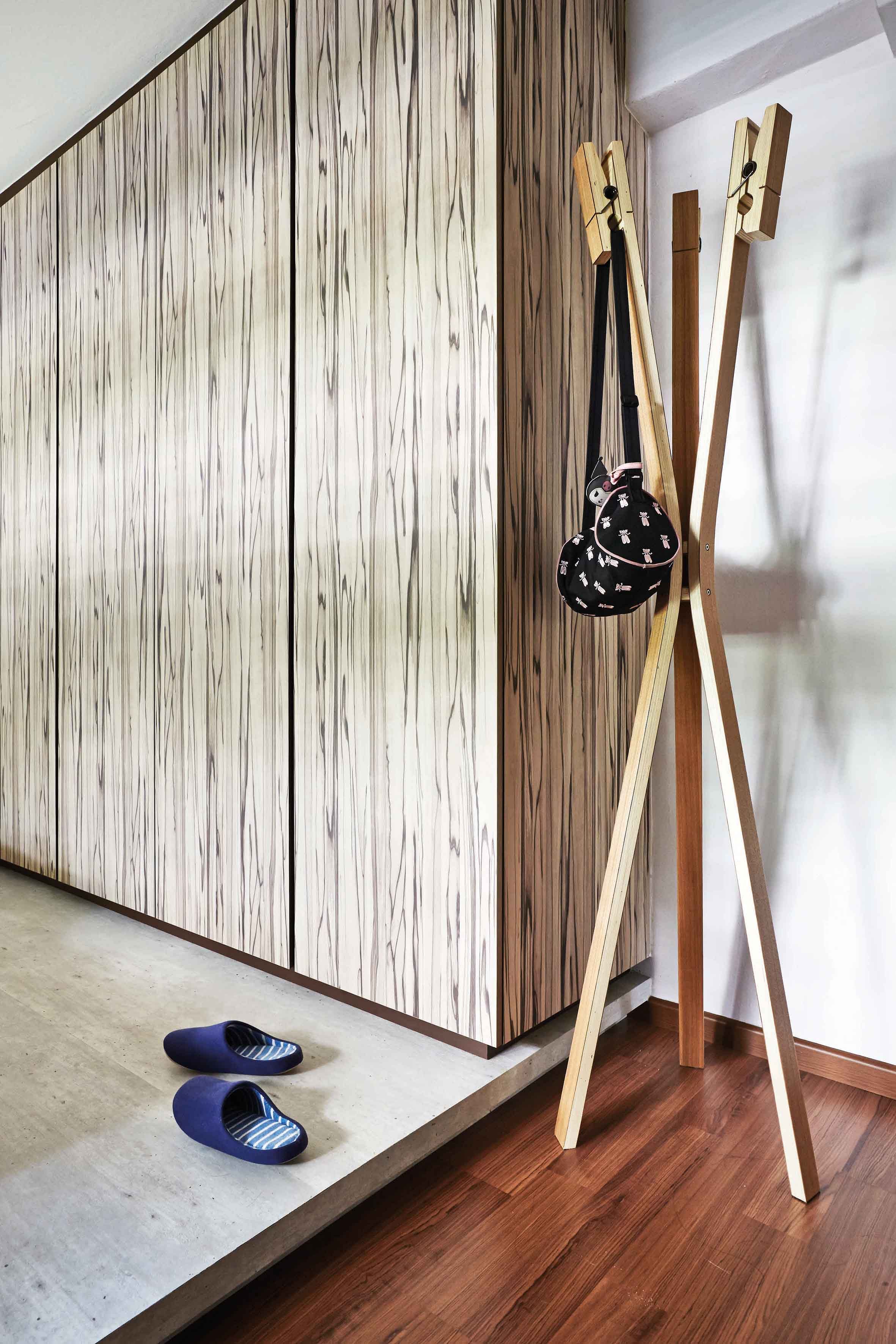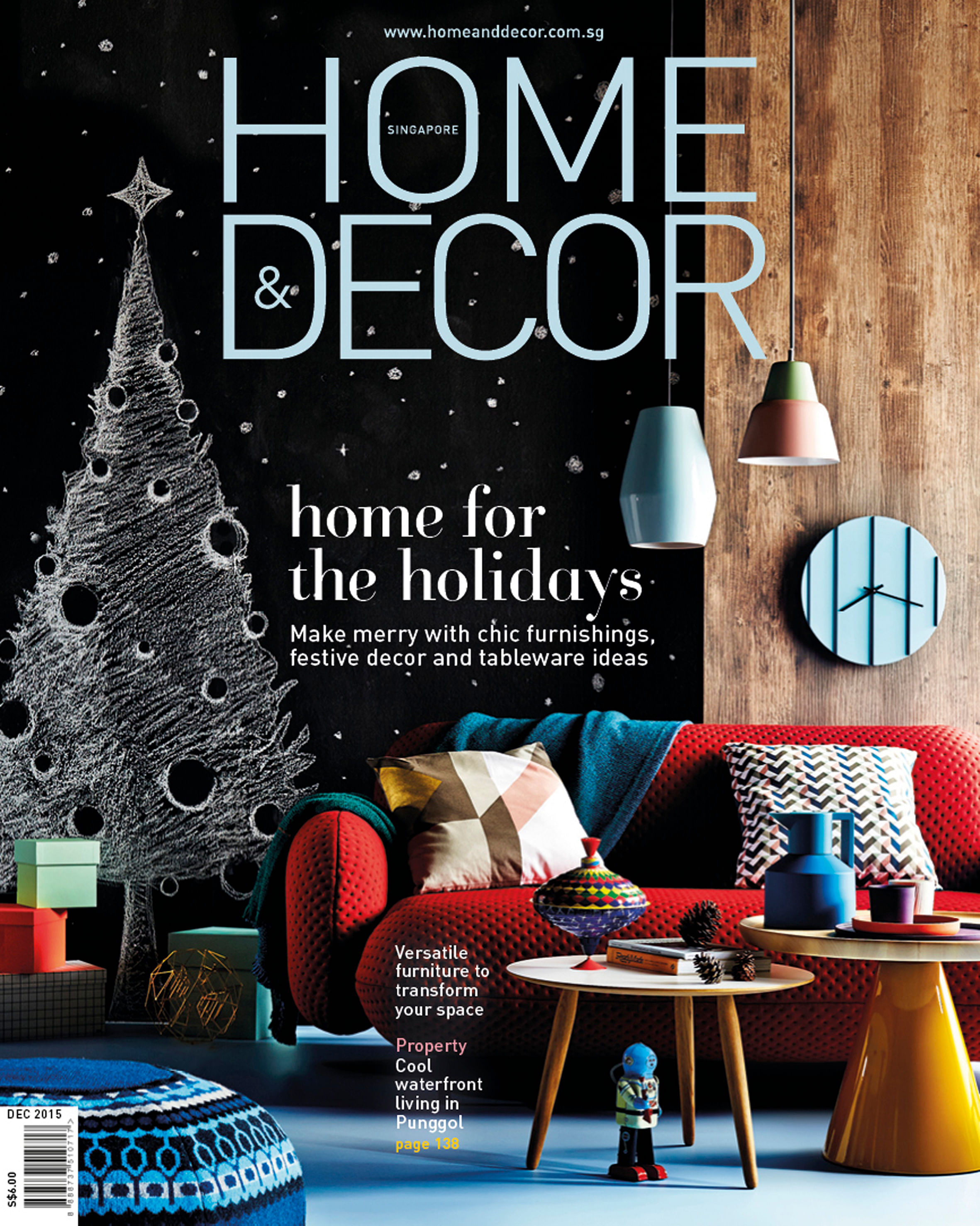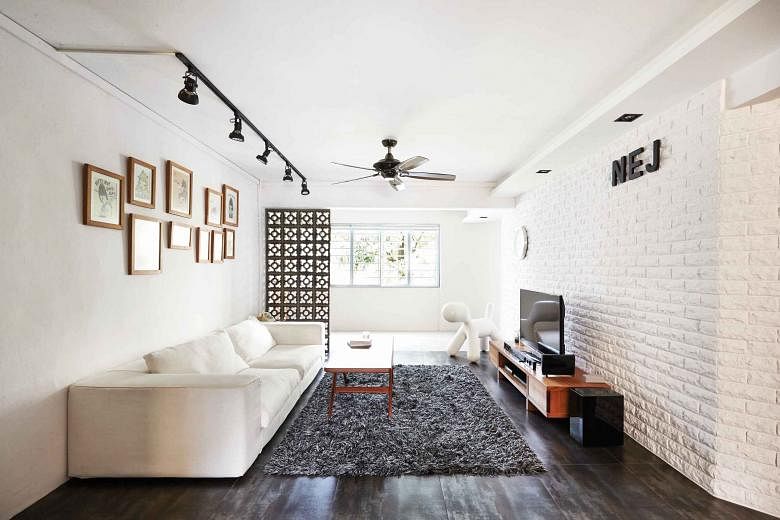Platforms mark out spaces in open-concept areas
Open-concept spaces are appealing, but if you can see everything at a glance, would it not make the home look cluttered?
Home owners have embraced the open-concept look, largely because it makes small spaces look larger.
It is more challenging to design an open-concept space than one with walls - you have to zone it for functions such as lounging or dining.

There are many ways to do that while leaving the space uncluttered. Use bigger pieces of furniture, such as sofas and console tables, to zone areas in a subtle way. You can do the same with flooring by using materials such as tiles and rugs.
A slight change in level (with a low platform) also signals a transition to another "zone" without breaking the line of sight in the space.
You can also mark out areas with partitions. But make sure they have designs that open out to the other side, instead of blocking out the light and space completely.
Tempered glass for bathrooms for safety
I am worried after reading a report about the glass door of a shower cubicle that shattered and killed the home owner, who fell on it. How can I prevent this from happening?
Untreated or annealed glass will break into large shards that can cut and even impale, causing death in some cases. This is not recommended for bathrooms and should be used only in other parts of the home, such as for glass cabinet doors. They can also be used within aluminium frames.
Tempered glass is glass that has undergone a high-heat process, so that it crumbles into tiny pieces with no sharp edges when broken.
Interior design firm Museum Homes' principal Alex Kwan says this is the best option for bathrooms.
For greater durability, he recommends using 12mm-thick tempered glass panels instead of the standard 8mm ones. However, the price of the thicker glass is 40 per cent more than the thinner one.
He says: "Tempered glass has a high tolerance for impact, but if the impact is at the corners, it might shatter.
"For bathrooms, the right way to mount glass panels for an L-shaped shower cubicle is to set the glass into an aluminium U-channel on the floor and wall and secure it with silicone. There is a layer of rubber insulation between the aluminium and glass, but that should be kept to a minimum to reduce friction."
Tempered glass may cost about 50 per cent more than regular untreated glass, but having peace of mind is priceless.
To check that you are getting what you pay for, look for the manufacturer's mark on tempered glass.
Define spaces before planning lighting
I like the look of track lighting. How do I use them effectively to light up my home? Can I use them for mood lighting?
Before you light your home, here are some basics. There are three main types of lighting - task, mood or ambient and general. General lighting is used to light a space overall, task lighting focuses illumination where you need it and mood lighting creates ambience.
A good lighting plan would have a combination of these three types.
Track lighting can be used for both general lighting as well as mood lighting (when used with a dimmer switch), says Ms April Kwan, regional interior design specialist at home furnishings chain Ikea.
With several spotlights along the track and when placed above workspaces, they can provide good overall illumination in an area.
The individual spotlights can also be directed to enhance features, such as a wall with art or photos, so that the surface does not look flat.
"Plan lighting in a home by first defining the functions of each space. Indicate where task lighting is needed. Then decide on the mood and general lighting," says Ms Kwan.
Cover scratches on wood with walnut or coffee grounds
How can I minimise the appearance of scratches on my wood furniture? Will more varnish do the trick?
Being a natural material, wood is prone to scratches and dents, especially for tabletops and flooring. More varnish is not going to help - you will only hide the natural beauty of the material.
Light scratches are easy to remove and you will be surprised at what you can use.
To cover scratches on darker- coloured wood, dip a cotton swab in moist coffee grounds and apply to the scratches. Wait 10 minutes and wipe the surface with a dry cloth.
For light-coloured wood, rub a shelled walnut over the scratches, leave it for a while, then wipe with a dry cloth.
For deeper scratches, Ms Jodie Low, marketing executive at Mountain Teak, a supplier of teak furniture, suggests using a wood repair stick, which can be found at local hardware stores.
"Choose a shade that is closest to the colour of your furniture and run it along the scratch. Finish with a layer of varnish.
"Do note that the effectiveness of this method depends on the type of stain and varnish on your furniture," she says.

• Home & Decor magazine's editor Rebeckka Wong and experts in the renovation and home decoration answer queries from readers in this series. These questions first appeared in the December issue of Home & Decor, published by SPH Magazines.
• Got a decorating or home renovation issue? Write to Experts Say, Home & Decor, 82 Genting Lane, Media Centre, Level 7, Singapore 349567 or e-mail maghomedecor@sph.com.sg. Photos and layouts are non-returnable.

